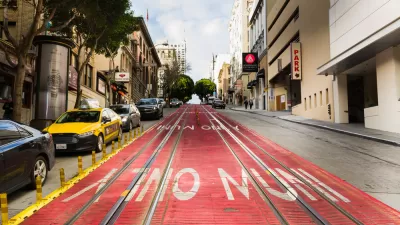The California Environmental Quality Act is generally considered a major obstacle for development. In a few cases, however, the law's definitions have been used to clear the way for development in environmentally sensitive areas.

Kevin Stark shares a timeline of precedent setting decisions regarding development under the California Environmental Quality Act.
The premise for the article: developers are using a case from 1995 to "push back on the ability of Bay Area cities to regulate waterfront development and protect residents from rising sea levels, a product of human-caused climate change."
The 1995 ruling pitted the development of a drug rehab facility in Contra Costa County against neighbors who opposed the project. "The company made what was then an obscure argument," writes Stark: "The California Environmental Quality Act, known as CEQA, the state’s premiere environmental law, did not require developers to consider how the environment might influence its project, only how the project would affect the environment."
Stark then combs through land use cases from 2009 and onward, created by disagreements about the reach of regulations designed to account for sea level rise and extreme weather, which sided with developers according to the precedent set by the 1995 ruling.
It's worth noting that the same logic could potentially be applied to homes built in wildfire danger areas—which is also a land use designation likely to take on more risk as the effects of climate change become more of a reality.
FULL STORY: Timeline: Lawyers for Developers Share Tactics to Blunt CEQA

Maui's Vacation Rental Debate Turns Ugly
Verbal attacks, misinformation campaigns and fistfights plague a high-stakes debate to convert thousands of vacation rentals into long-term housing.

Planetizen Federal Action Tracker
A weekly monitor of how Trump’s orders and actions are impacting planners and planning in America.

In Urban Planning, AI Prompting Could be the New Design Thinking
Creativity has long been key to great urban design. What if we see AI as our new creative partner?

Pedestrian Deaths Drop, Remain Twice as High as in 2009
Fatalities declined by 4 percent in 2024, but the U.S. is still nowhere close to ‘Vision Zero.’

King County Supportive Housing Program Offers Hope for Unhoused Residents
The county is taking a ‘Housing First’ approach that prioritizes getting people into housing, then offering wraparound supportive services.

Researchers Use AI to Get Clearer Picture of US Housing
Analysts are using artificial intelligence to supercharge their research by allowing them to comb through data faster. Though these AI tools can be error prone, they save time and housing researchers are optimistic about the future.
Urban Design for Planners 1: Software Tools
This six-course series explores essential urban design concepts using open source software and equips planners with the tools they need to participate fully in the urban design process.
Planning for Universal Design
Learn the tools for implementing Universal Design in planning regulations.
planning NEXT
Appalachian Highlands Housing Partners
Mpact (founded as Rail~Volution)
City of Camden Redevelopment Agency
City of Astoria
City of Portland
City of Laramie




























